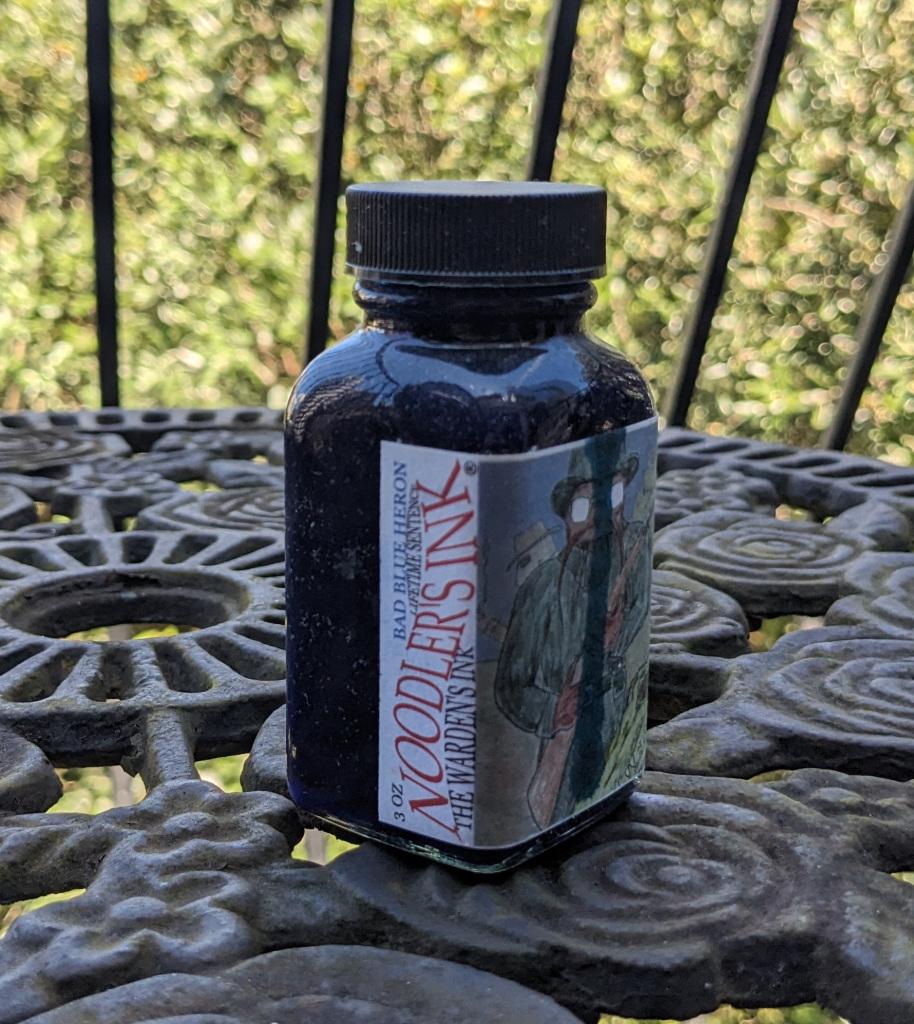This is a bottle of
Bad Blue Heron ink and it's unique.
By which I mean it is
absolutely unique and I'll explain why.

One of the rare use-cases people still employ fountain pens for is signing important documents, a tradition amongst diplomats and bankers and the like. Everyday people sometimes do it too such as with a pen inherited from granddad even if they use a ballpoint for everything else.
There's a formality and a solemnity to it, the signing of the document becomes an occasion.
There are two common types of inks, water-soluble and
Iron Gall. The difference is the former washes away in water and the latter is permanent. Iron Gall inks developed in the
Classical Antiquity era using iron sulfate and the protrusions from oak trees. The very best permanent inks are still Iron Gall today.
Until a few decades ago it was a legal requirement to sign documents with an Iron Gall ink in the UK and I presume (I don't know) other countries. The motivation for this is that documents could be more readily forged if water-soluble inks were used. Forgery still occurred because forgers became proficient at imitating other people's signatures on replica documents.
Which brings me to the bottle.
This bottle is filled with a version of the ink with a precise chemical composition that no other bottle shares. Chemical analysis and spectrometry can confirm that my signature on the page came from this bottle and no other.
It's like an analogue version of
Public Key Cryptography. Without access to this bottle or my signing pen, my signature is impossible to forge.
Which is absolutely inconsequential in the modern age but I get a kick out of it.
-SRA. Auckland 31/i 2024.